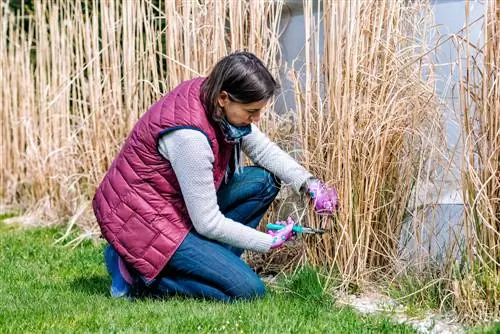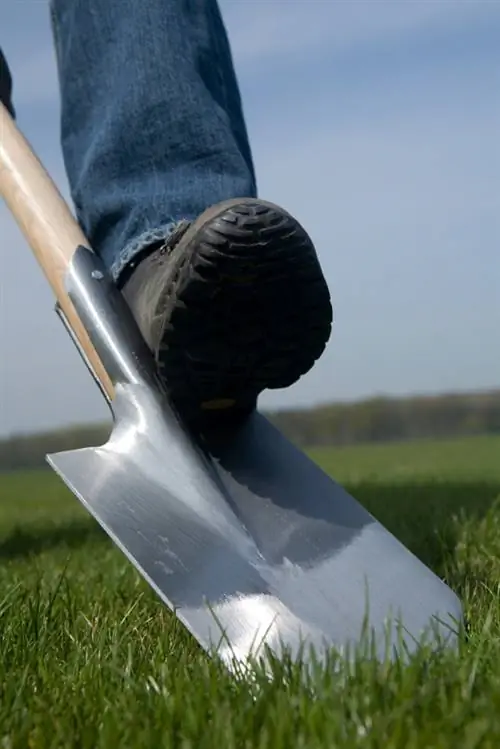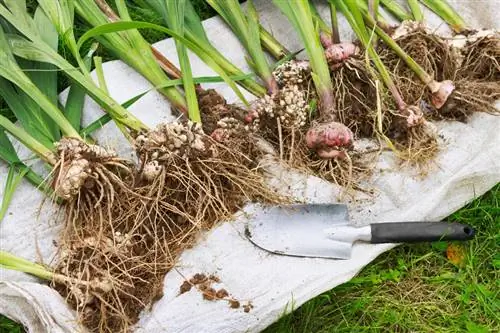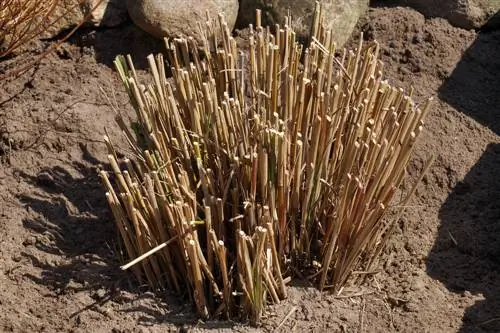- Author admin [email protected].
- Public 2023-12-16 16:46.
- Last modified 2025-01-23 11:22.
If you didn't set a root barrier when planting the Chinese reed, you'll be annoyed later when you want to eliminate the reed. This could become a multi-year affair. But digging is still the best method.
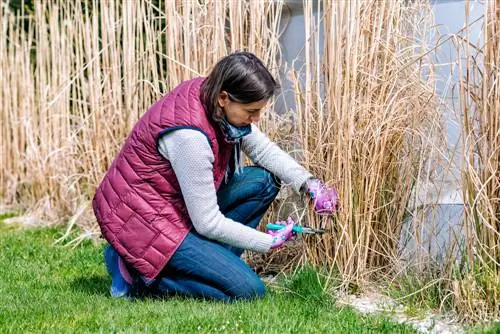
How to properly dig miscanthus?
To successfully dig up miscanthus, cut off all the stalks in spring, chop up the roots with a pickaxe and remove them with a spade. Make sure to remove all root parts to prevent re-sprouting.
When is the best time to dig up miscanthus?
The best time to dig up miscanthus is in earlyspring. Then the elephant grass is still in a kind of hibernation and has not yet sprouted again. Before the new shoots become visible, you should start digging.
What should be done before digging up miscanthus?
With its long stalks in the way, miscanthus is difficult to dig up, which is why it has to be cut down first. Radically cut off all above-ground parts of the plant down to the ground. Caution: Handle the seed heads with care. Otherwise, you can support the miscanthus in self-sowing.
Armed with sharp secateurs (€56.00 on Amazon), you can cut off the miscanthus stalks in bunches. It is recommended to wear thickgarden gloves, otherwise injuries can quickly occur due to the sharp-edged plant parts.
What and how do you dig up miscanthus?
Once all the stalks and leaves have been removed, thePickaxeis used. Use it tochopthe roots of the plant. At the same time, use aspade to remove all the root parts from the ground. Cutting, chopping and removing - it takes a long time, but the effort is important in order to ultimately have peace of mind from the Miscanthus.
What should you pay attention to when digging?
All root parts of miscanthus must beremoved from the soil. Otherwise the miscanthus could sprout again. In the worst case, the roots can extend up to 250 cm deep into the ground. This is especially true for specimens such as the giant miscanthus. Basically, you can assume that the roots are spread more or less deep into the soil depending on the age, species, height and location of the plant.
Can miscanthus reappear after being dug up?
Thedangerof the Miscanthus reappearing after diggingexists if you were not thorough enough. The roots of this plant behave similarly to those of bamboo, which is also known for its stubborn root system. The smallest root remnants can produce new plants again. It is therefore often recommended to cover the excavation site with a black pond liner. It nips any remaining roots in the bud. The pond liner is only removed after a year.
How can digging up miscanthus be avoided?
When planting miscanthus, it should be important to use aroot barrier. The material should be sturdy enough to keep rhizomes in check. Additionally, it is advisable to divide miscanthus regularly as this slows its spread.
Tip
It's not necessary to dig up miscanthus - when it's cultivated in a bucket
If you generally don't want to take any risks, you should rather plant the Miscanthus in a pot. There it is manageable and has no chance of growing beyond its location.

